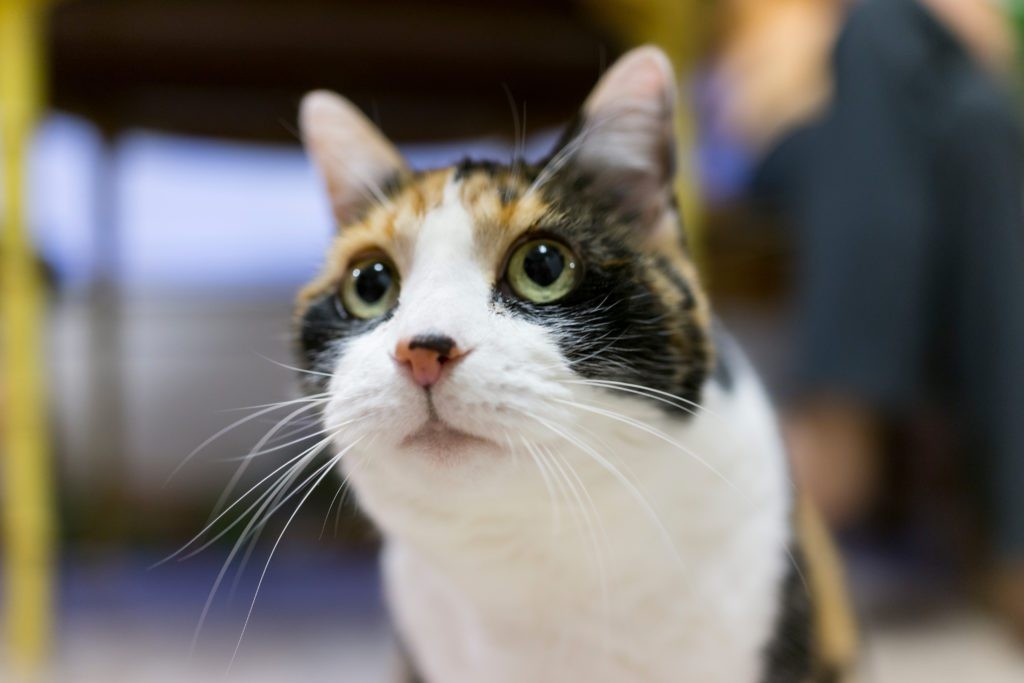A cat’s striking eye color comes from its iris, but the black pupil offers valuable insights into its health and well-being. While pupils naturally constrict in bright light and dilate in dim settings to enhance vision, persistent dilation can signal underlying issues. This article explores the various reasons behind dilated pupils in cats, ranging from normal responses to serious medical conditions.
Normal Causes of Dilated Pupils in Cats
Several factors can cause temporary pupil dilation in cats without indicating a health problem:
- Low Light: Pupils widen to allow more light to enter the eye, improving vision in dimly lit environments.
- Emotional Responses: Excitement, fear, anger, or even happiness can trigger pupil dilation as part of the cat’s physiological response to stimuli. This is a natural response to the “fight or flight” instinct.
- Medications: Certain medications, such as atropine, morphine, and clonidine, can cause pupil dilation as a side effect.
- Catnip: This herb induces a euphoric state in cats, often accompanied by dilated pupils.
When Dilated Pupils Signal a Problem
Continuously dilated pupils, however, often indicate an underlying health concern that requires veterinary attention. Potential causes include:
- Overstimulation: Prolonged exposure to intense stimuli can lead to persistent dilation.
- Pain: Dilated pupils can be a subtle sign that your cat is experiencing pain.
- Age-Related Atrophy: As cats age, certain muscles, including those controlling pupil size, can weaken, resulting in larger pupils.
- Underlying Medical Conditions: A range of medical conditions can manifest as persistent pupil dilation.
Medical Conditions Associated with Dilated Pupils
Several serious health conditions are linked to persistent pupil dilation:
Anisocoria
This condition refers to unequal pupil sizes, indicating a potential problem affecting the brain, nerve pathways, or eyes. Possible causes include infection, trauma, stroke, or tumors.
Brain Tumor
Meningiomas, benign tumors originating in the membranes surrounding the brain and spinal cord, are the most common type of brain tumor in cats.
Feline Dilated Pupil Syndrome (Key-Gaskell Syndrome)
This rare disorder affects the autonomic nervous system, which regulates unconscious bodily functions like heart rate, digestion, and pupil size.
Glaucoma
Increased pressure within the eye damages the optic nerve, potentially leading to blindness. This pressure buildup is usually caused by a blockage in the eye’s drainage system.
Hypocalcemia
Low blood calcium levels disrupt vital functions like nerve impulse transmission, bone growth, muscle contraction, and blood clotting.
Head Trauma
Brain damage from head injuries can impact the autonomic nervous system, affecting pupil control.
Insulinoma
These cancerous tumors in the pancreas overproduce insulin, leading to dangerously low blood sugar levels.
Retinal Detachment
This serious eye disorder occurs when the retina separates from the underlying tissue, threatening vision loss.
Thiamine Deficiency
This vitamin is crucial for nervous system function. While rare in cats, thiamine deficiency is usually associated with homemade diets.
Venom Toxicity
Exposure to venom from snakes, spiders, or other poisonous insects can cause a variety of symptoms, including dilated pupils.
What to Do if Your Cat’s Pupils Are Dilated
If you observe prolonged pupil dilation in your cat, try moving them to a brightly lit area or shining a light directly into one eye. If the pupils fail to constrict, consult your veterinarian immediately.
Veterinary Examination and Diagnosis
Your veterinarian will conduct a thorough examination, including a detailed medical history, to determine the underlying cause of the dilated pupils. Diagnostic tests may include:
- Baseline Tests: Bloodwork, urinalysis, blood pressure measurement.
- Ophthalmoscopy: Examination of the retina, optic nerve, and blood vessels.
- Gonioscopy: Examination of the eye’s drainage system.
- Tonometry: Measurement of eye pressure to detect glaucoma.
- Ultrasound: Evaluation of eye structures.
- CT Scan: Detection of brain tumors.
Conclusion
Dilated pupils in cats can be attributed to various factors, from benign environmental influences to serious medical conditions. While transient dilation is often normal, persistent dilation warrants immediate veterinary attention. Early diagnosis and treatment are crucial for managing underlying conditions and ensuring your cat’s well-being. Don’t hesitate to contact your veterinarian if you have any concerns about your cat’s eye health.
